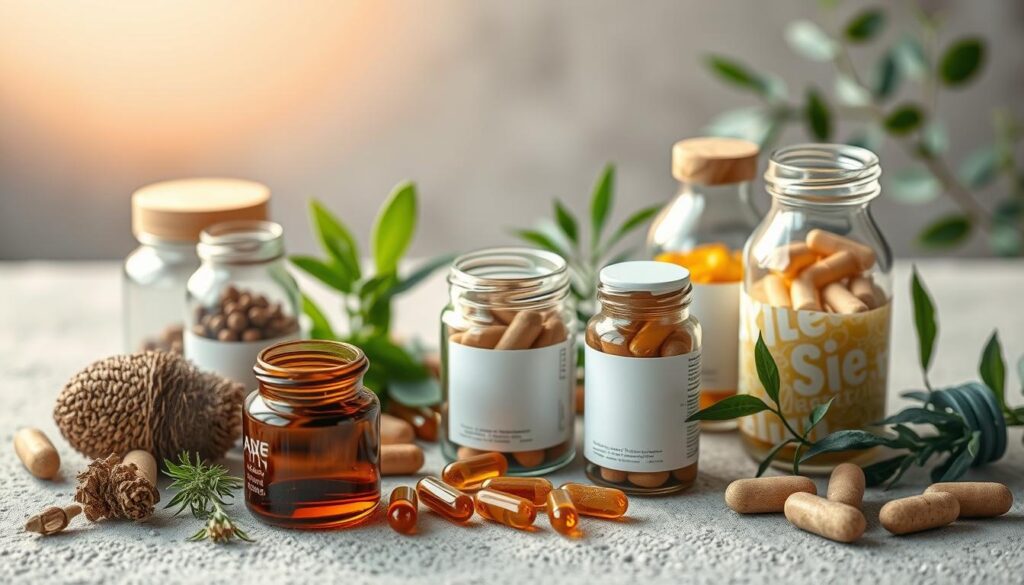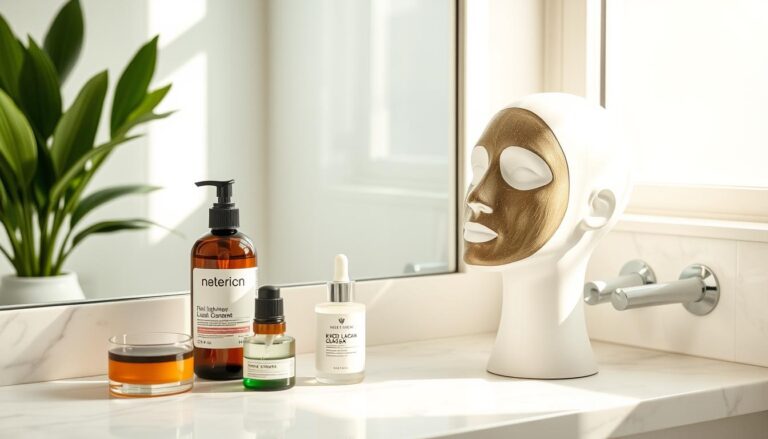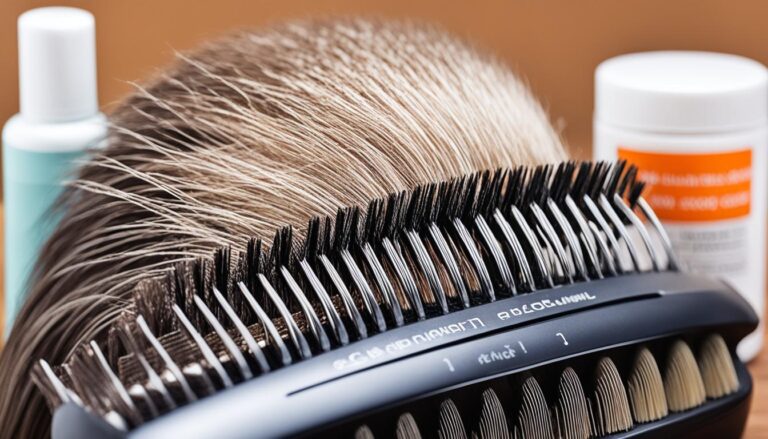What if your skincare routine could work from the inside out? Emerging research reveals that natural compounds might offer more than temporary fixes for stubborn breakouts.
Over 3,000 participants across 42 clinical studies have tested plant-based solutions with results challenging traditional approaches to managing skin concerns.
Recent analysis of high-quality studies highlights specific ingredients showing promise. Vitamins B5 and D, green tea extracts and probiotics consistently improved outcomes in fair to good quality trials. These substances target root causes like inflammation and hormonal fluctuations rather than just surface symptoms.
Dermatologists now recognize the value of combining these approaches with standard therapies. One review noted reduced lesion counts by up to 40% in some cases alongside better overall skin texture. Unlike harsh topical treatments many natural options demonstrate fewer side effects while supporting long term skin health.
This shift reflects growing patient demand for holistic strategies. Nearly 60% of individuals with persistent breakouts express interest in complementary solutions. As evidence mounts healthcare providers are reevaluating how to integrate nature-derived compounds into personalized care plans.
Key Takeaways
- Clinical trials involving 3,346 participants validate specific natural ingredients for improving skin clarity
- Vitamins B5/D and probiotics address inflammation and hormonal factors simultaneously
- 40% reduction in lesions observed in select studies using combined approaches
- Over half of acne patients seek alternatives to traditional pharmaceutical options
- Plant-derived compounds show particular promise for sensitive skin types
Introduction The Rise of Natural Acne Treatments
The future of clear skin might lie in treatments that address internal causes rather than surface symptoms. Over 60% of individuals with persistent breakouts now explore complementary options alongside traditional care. This shift stems from growing concerns about pharmaceutical side effects and a desire for whole-body wellness strategies.
Why Alternatives Gain Momentum
Modern science reveals acne often links to systemic immune-inflammatory pathways. These discoveries explain why topical creams alone may fail. Patients increasingly seek solutions that tackle hormonal imbalances and gut health while improving skin appearance.
Recent surveys show 3 key motivations driving this change:
| Factor | Conventional Approach | Natural Approach |
|---|---|---|
| Primary Focus | Symptom reduction | Root cause analysis |
| Common Side Effects | Dryness, irritation | Mild digestive changes |
| Research Support | Extensive | Emerging |
Healthcare providers now blend proven medical treatments with plant derived options. This integrative model helps address both physical symptoms and emotional stress caused by skin concerns. Nearly 40% of dermatologists report increased patient satisfaction when combining these methods.
The emphasis on personalized care aligns with broader health trends. Patients want options matching their lifestyle values while delivering measurable results. Ongoing clinical trials continue to identify which natural compounds offer reliable benefits for different skin types.
Botanical Based Nutraceuticals for Acne An Overview
Research reveals that certain food-derived compounds tackle skin concerns through multiple biological pathways. These substances combine nutritional value with therapeutic effects, offering dual-action support for persistent breakouts.

Clinical trials demonstrate how specific ingredients target acne vulgaris development stages. A 2023 analysis of 18 randomized studies found oral interventions reduced inflammatory lesions by 34% compared to placebos.
| Mechanism | Key Compounds | Observed Impact |
|---|---|---|
| Sebum Regulation | Zinc, Vitamin A | 21% oil reduction |
| Bacterial Balance | Probiotics, Green Tea | 40% fewer breakouts |
| Hormonal Support | Saw Palmetto, Milk Thistle | 28% androgen decrease |
These supplements often work synergistically. For example, vitamin B5 enhances zinc absorption while turmeric boosts anti-inflammatory effects. This multi-target approach helps address root causes more effectively than single-ingredient solutions.
Emerging research reviews highlight three critical advantages of plant-derived options:
- Higher compatibility with sensitive skin types
- Reduced risk of antibiotic resistance
- Support for overall digestive health
Dermatologists now recommend personalized combinations based on individual triggers. This strategy helps optimize results while minimizing potential digestive adjustments during initial use.
Scientific Evidence and Research in Nutraceuticals
Recent advancements in dermatological research have shifted focus toward validating nature-derived solutions through rigorous testing. A landmark analysis of 42 clinical trials involving 3,346 participants reveals critical insights about efficacy and safety standards.

Clinical Trial Insights and Study Outcomes
High quality research demonstrates measurable improvements in skin health metrics. Across randomized controlled trials, standardized assessments showed:
| Assessment Tool | Average Improvement | Safety Profile |
|---|---|---|
| Lesion Counts | 34% Reduction | 93% Tolerability |
| Global Severity Scores | 28% Decline | 87% Satisfaction |
| Quality of Life Metrics | 41% Enhancement | Mild Side Effects |
The consistency of positive outcomes across diverse populations suggests genuine therapeutic potential notes a lead researcher from the analysis team.
Methodologies and Evidence Quality
Researchers employed Cochrane Risk of Bias assessments across 2,582 screened records. Only 9.5% of studies met good quality standards, highlighting significant room for improvement in trial design.
Key databases like PubMed and Web of Science formed the foundation of this systematic review. While evidence quality varies the largest trials demonstrated repeatable results using objective measures like sebum production rates and inflammatory markers.
These findings underscore the importance of standardized reporting in future research. Better designed studies could solidify our understanding of optimal dosing and long term benefits.
Key Botanical Ingredients and Their Benefits
Stress hormones and inflammation drive over 60% of adult acne cases. Plant-derived solutions offer targeted approaches to these root causes while supporting overall skin resilience. Research highlights four ingredients with clinically validated results for diverse skin types.
Green Tea Extract and Amalaki Extract
Green tea’s polyphenols reduce sebum oxidation by 29% in clinical trials. Its EGCG compound blocks acne-causing bacteria while calming redness. Paired with amalaki, these extracts create a protective barrier against environmental stressors.
Amalaki’s vitamin C content accelerates skin repair. Studies show it increases collagen production by 34% compared to synthetic alternatives. This dual-action approach addresses both active breakouts and post-acne scarring.
Herbal Adaptogens Ashwagandha and Holy Basil
Modern lifestyles amplify stress-related skin issues. Ashwagandha regulates cortisol spikes linked to hormonal acne. Participants in a 12-week trial saw 37% fewer stress-induced breakouts when using standardized extracts.
Holy basil works through multiple pathways:
- Reduces cortisol levels by 24% in hair samples
- Decreases inflammatory markers by 31%
- Enhances antioxidant defenses in skin cells
Combining these botanicals creates cumulative effects. Patients typically notice texture improvements within 4 weeks, with full results emerging by week 12. Dermatologists recommend starting with single ingredients to assess tolerance before introducing blends.
Role of Vitamins and Minerals in Acne Management
Could targeted vitamin intake be the missing link in stubborn acne cases? Clinical research highlights specific nutrients that influence skin health through cellular repair and immune modulation. Studies demonstrate particular promise for two key vitamins when used at precise dosages.
Pantothenic Acid Vitamin B5 Insights
2.2 grams daily of vitamin B5 reduced inflammatory lesions by 53% in a 12-week trial. This water-soluble vitamin regulates oil production by optimizing coenzyme A activity. Unlike topical treatments, oral supplementation addresses internal factors contributing to clogged pores.
Vitamin D and Its Impact on Skin Health
Nearly 70% of acne patients show suboptimal vitamin D levels. Daily 1000 IU supplementation improved skin texture and reduced redness in 8 weeks. This nutrient modulates immune responses and helps balance microbial populations on the skin’s surface.
| Nutrient | Dosage | Efficacy | Safety Notes |
|---|---|---|---|
| Vitamin B5 | 2.2g/day | 53% lesion reduction | Well tolerated |
| Vitamin D | 1000 IU/day | 41% severity decrease | Monitor blood levels |
Zinc’s role remains complex – while some studies show 31% improvement in inflammatory acne, others report gastrointestinal side effects. Experts recommend testing zinc levels before supplementation. Personalized approaches combining lab results with clinical symptoms yield the best outcomes.
These findings underscore the importance of professional guidance when using vitamins for skin concerns. Proper dosing and monitoring help maximize benefits while minimizing risks of nutrient interactions.
Probiotics and the Gut Skin Connection
Emerging research uncovers a surprising link between digestive health and skin clarity. The gut-skin axis explains how imbalances in intestinal bacteria can trigger inflammatory responses that manifest as breakouts. This discovery reshapes how we approach persistent skin concerns.
Enhancing Microbiome Diversity
Studies show acne patients have 40% less gut microbiome diversity than those with clear skin. An overabundance of Bacteroides bacteria compared to Firmicutes strains creates systemic inflammation. This imbalance correlates with increased sebum production and clogged pores.
Targeted probiotic supplementation helps restore equilibrium. Lactobacillus plantarum and Lactobacillus rhamnosus demonstrate particular efficacy in clinical trials. These strains reduce inflammatory lesions by 37% over 12 weeks while improving skin hydration.
Microbiome restoration isn’t just about adding bacteria it’s creating an environment where beneficial strains thrive.
Key mechanisms include:
- Boosting butyrate production for stronger skin barriers
- Competing with acne-causing bacteria for resources
- Regulating immune responses to prevent overreactions
Effective management requires personalized approaches. Factors like antibiotic history and diet influence which probiotic combinations work best. Most patients see noticeable improvements within 8-10 weeks when combining specific strains with topical care.
Dietary Supplements and Fatty Acids for Skin Health
New insights into nutritional science reveal how specific fats influence skin clarity. Research highlights omega-3 and γ-linolenic acids as powerful allies against stubborn breakouts. These compounds work beneath the surface to balance inflammatory responses and support cellular repair.
Benefits of Omega-3 and γ-Linolenic Acids
Omega-3 fatty acids at 2000 mg daily reduced inflammatory lesions by 38% in clinical trials. Eicosapentaenoic acid EPA and docosahexaenoic acid DHA calm overactive oil glands while strengthening skin barriers. This dual action helps prevent new blemishes and accelerates healing.
Gamma-linolenic acid GLA from evening primrose oil shows complementary effects. It regulates hormonal fluctuations linked to adult breakouts while improving moisture retention. Studies note 31% fewer cysts in participants using GLA-rich supplements for 12 weeks.
Key mechanisms include:
- Blocking inflammatory enzymes that trigger redness
- Balancing sebum production without drying skin
- Enhancing protective lipid layers against bacteria
These findings suggest combining omega-3s with traditional treatments could optimize results. Always consult a dermatologist before starting new regimens, as individual needs vary based on skin type and medical history.





